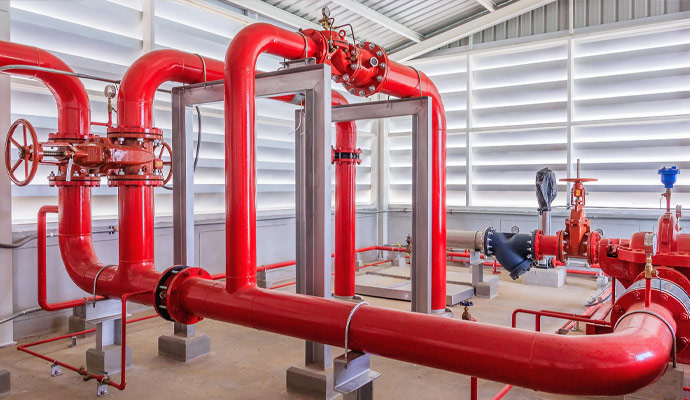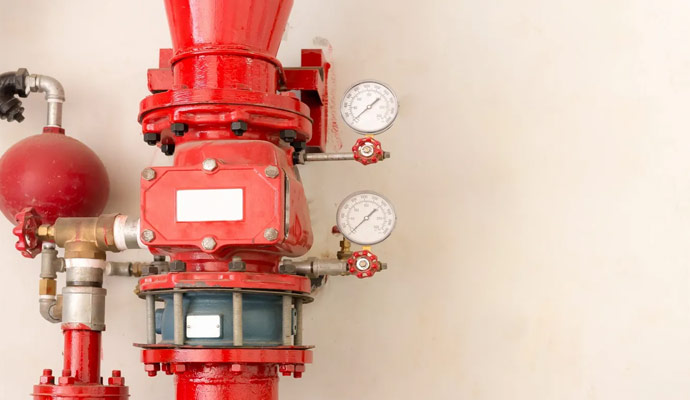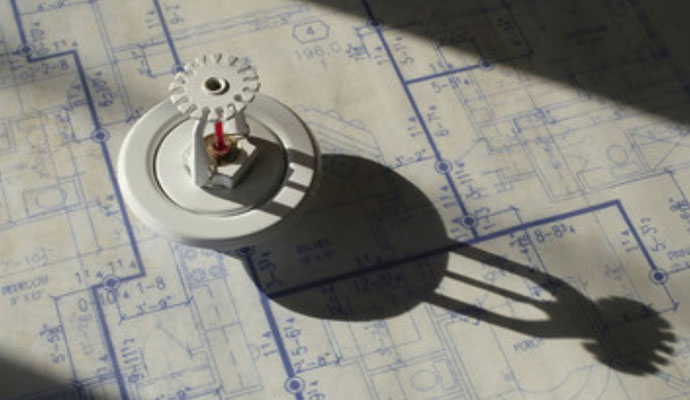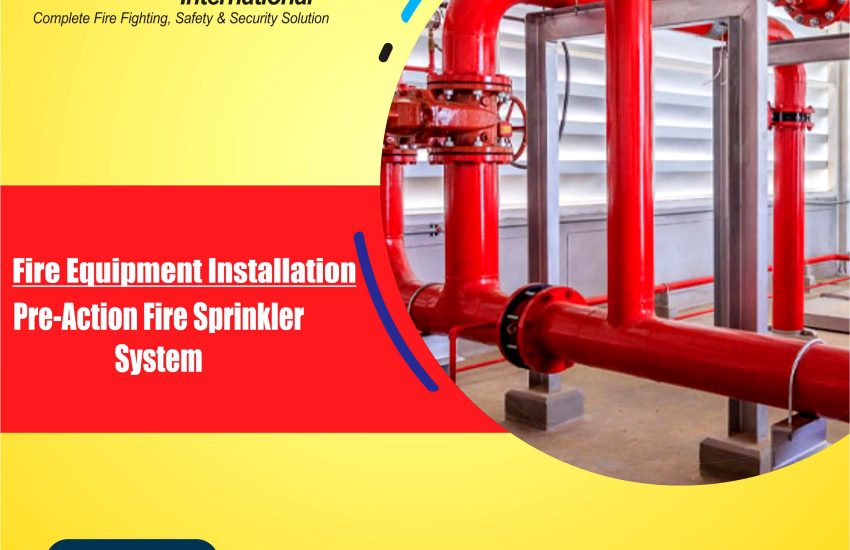Pre-Action Fire Sprinkler System offers advanced fire protection, making it ideal for sensitive environments. These systems help safeguard valuable equipment and critical assets. This article explores the installation process of a pre-action fire sprinkler system and provides guidance on how organizations can plan for its implementation.

What is a Pre-Action Fire Sprinkler System?
A Pre-Action Fire Sprinkler System requires two conditions before it releases water:
- Fire Detection: Heat or smoke detectors identify the fire.
- Confirmation: A secondary trigger, often manual, confirms the fire’s legitimacy.
This design ensures water is only released when a fire has been confirmed. As a result, it minimizes the risk of accidental discharge and water damage. Pre-action systems are particularly suitable for areas like data centers, server rooms, and archives.
How Does a Pre-Action Fire Sprinkler System Work?

Pre-action systems combine wet pipe and dry pipe components for effective fire protection. Here’s how it operates:
- Detection: Smoke or heat detectors activate when they sense a fire.
- Confirmation: A secondary manual trigger confirms that the fire is genuine.
- Water Flow: When both triggers are activated, water is released through the sprinklers.
This two-step process helps to prevent accidental water discharge while providing quick fire response.
Advantages of Pre-Action Fire Sprinkler Systems
Organizations benefit from the following advantages:
- Reduced Risk of False Activation: The dual-trigger system minimizes the chances of accidental discharge.
- Quick Response: The system activates quickly when both triggers are confirmed, preventing the spread of fires.
- Versatility: The system is ideal for various environments, such as offices, warehouses, and server rooms.
- Regulatory Compliance: Installing pre-action systems helps organizations comply with fire safety standards.
The Installation Process of Pre-Action Fire Sprinkler Systems

Installing a pre-action fire sprinkler system requires a step-by-step process to ensure it works correctly. Let’s look at each phase:
1. Conduct a Fire Risk Assessment
The first step is performing a fire risk assessment to identify potential fire hazards and determine the system’s requirements:
- Identify High-Risk Areas: Focus on areas with valuable assets, like server rooms or laboratories.
- Evaluate Building Layout: The building’s layout will determine the best locations for sprinkler heads, detectors, and triggers.
2. Design the Pre-Action System
After the risk assessment, you can design the system:
- Sprinkler Placement: Engineers determine where to place sprinkler heads for full coverage of the high-risk areas.
- Detector Installation: Place smoke or heat detectors strategically to detect fires early.
- Activation Mechanism: Install manual pull stations and control panels at easily accessible points.
3. Install the System Components
With the design in place, installation can begin:
- Piping: Wet and dry pipes are installed following the design layout.
- Pre-Action Valve: The valve stays closed until both detection and confirmation triggers activate it.
- Detection and Alarm Systems: Install smoke and heat detectors throughout the facility to ensure quick fire detection.
4. System Testing and Commissioning
Once the installation is complete, the system undergoes thorough testing to confirm everything functions properly:
- Activation Test: Engineers conduct tests to verify that both triggers properly activate the water flow.
- Adjustments: Adjustments are made if necessary to ensure optimal performance.
5. Regular Maintenance and Inspection
To maintain the system’s effectiveness, schedule regular maintenance:
- Annual Inspections: The system should be inspected at least once a year to ensure all components function correctly.
- Cleaning: Keep sprinkler heads and detectors clean to avoid blockages or malfunctions.
- Testing: Conduct regular tests to ensure that detection and activation mechanisms remain reliable.
Fire Sprinkler Planning and Fixing for Organizations
When planning a pre-action fire sprinkler system, organizations should keep these factors in mind:
1. Compliance with Fire Safety Codes
Ensure compliance with fire safety regulations to guarantee the system is effective:
- Follow NFPA Standards: Adhering to the National Fire Protection Association (NFPA) standards ensures that the system meets regulatory requirements.
2. Hire Certified Installation Experts
A certified installation team ensures proper installation:
- Certified Engineers: Professionals with proper certifications guarantee the system’s proper design and installation.
3. Employee Training and Awareness
Proper employee training is critical once the system is installed. This ensures everyone knows how to respond during a fire emergency:
- Fire Safety Drills: Regular drills help employees become familiar with evacuation procedures and the use of the system in emergencies.
Conclusion
A Pre-Action Fire Sprinkler System offers reliable protection for sensitive environments. Its two-trigger mechanism ensures that water is released only when a fire is confirmed, thus reducing the risk of accidental water discharge. This system is particularly beneficial in areas like data centers and server rooms, where water damage can be catastrophic.


